Dr Aparna Jyoti Rabha developed a special interest on mushroom spawn in course of her doctoral research work on fungus in Assam University, Silchar. She also nurtured a dream to help a section of womenfolk of downtrodden families in Boko area, who brew liquor for livelihood, by promoting an alternative livelihood.
Her research interest and desire to utilise the knowledge for the betterment of socio-economic condition of people in Boko area converged on the idea of promotion of mushroom cultivation as an alternative livelihood option. Rabha, who received her master’s degree in biotechnology from Gauhati University, realised that availability of mushroom seeds is the key challenge for sustainability of the new livelihood for these women.
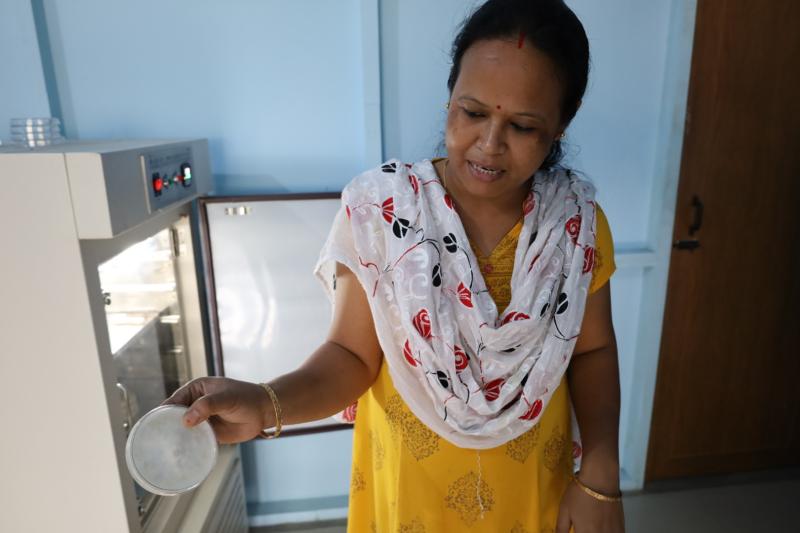
This motivated the doctorate degree holder to start her commercial venture – Rabha Agrotech Mushroom Spawn Production Unit at Boko in Kamrup district in 2022. Directorate of Horticulture & Food Processing, Assam provided her financial support under the Horticultural Mission for Northeast and Himalayan States Scheme, 2019-20.
She managed to convince a group of women who had reluctantly agreed to give up brewing liquor and start mushroom cultivation but had doubts if earnings from it would be sufficient to support their families.
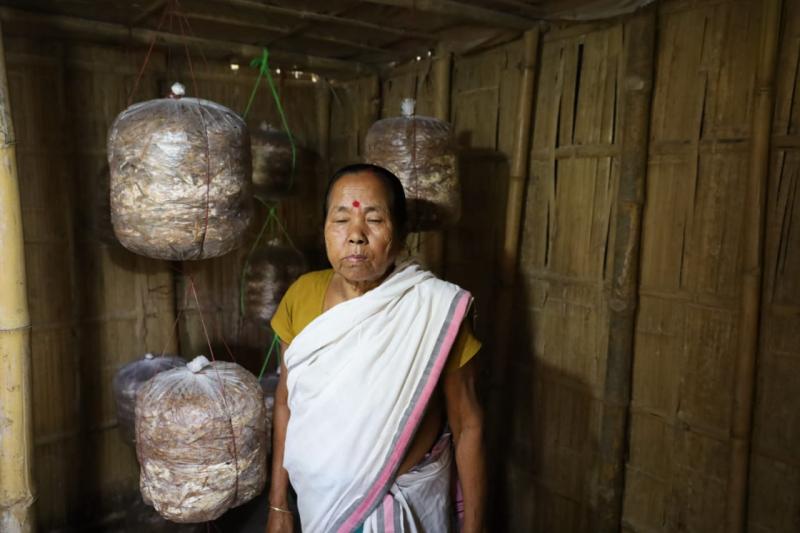
Rabha found that even though mushroom cultivation has huge prospects farmers in Assam find it non-remunerative due to high prices of seeds. Due to shortage in production in the state, farmers are at the mercy of the middlemen, who procures mushroom seeds from outside the state and supplies them.
She started producing mushroom seeds of different varieties- oyster, button and shitake- at her unit and selling at the rate of Rs 100 a kilogram. Farmers can harvest 2.5 kg of mushroom by planting 100 grams of seeds on mushroom cylinder. From mushroom cylinder, harvesting is possible three times. First harvesting is done within 21 to 30 days, but second and third harvesting is done after a week’s time she says.
“Thus, with little input cost, they can earn modest income of Rs 10,000 to R 15,000 a month. As these women are poor with no capital, mushroom cultivation is a sustainable livelihood for them,” Rabha explains.
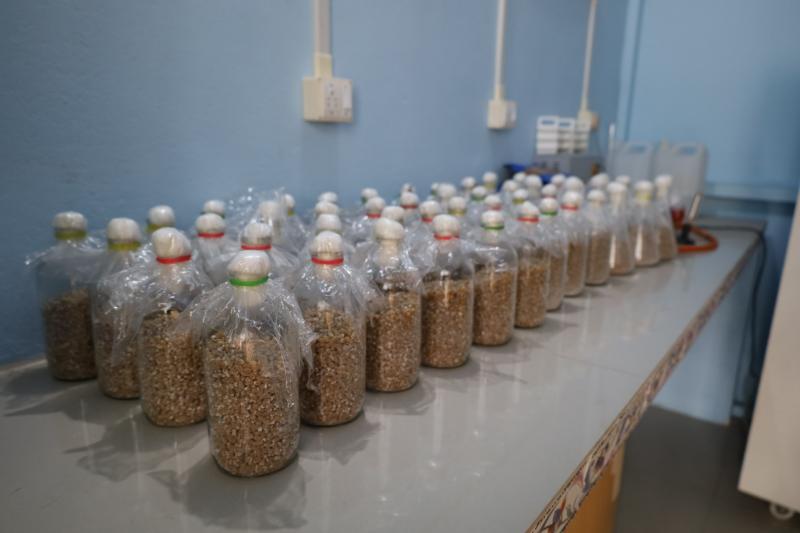
Aparna Rabha had undergone training on spawn production technology at ICAR-Directorate of Mushroom Research, Solan, Himachal Pradesh in 2022. She also participated at a skill development/training programme on Osyter Mushroom Farming and Spawn Production Technology organised by the Mushroom Task Group of the Defence Research Laboratory at Tezpur. “The technological know-how comes in handy to make my venture successful to the expected level because I can share my knowledge with the farmers,” she says.
Nizara Self-Help Group of Loharghat area of Boko in the district with 13 members started mushroom cultivation by purchasing seeds from Aparna Rabha. Subala Rabha, a member of the SHG said that with a small beginning their group earned profit of about Rs 10,000 last year. “This winter we are going to do it on a bigger scale and start before puja festivities,” she says and admits that initially group members had not shown much interest but after realising about the huge market demand they are keen to expand it.
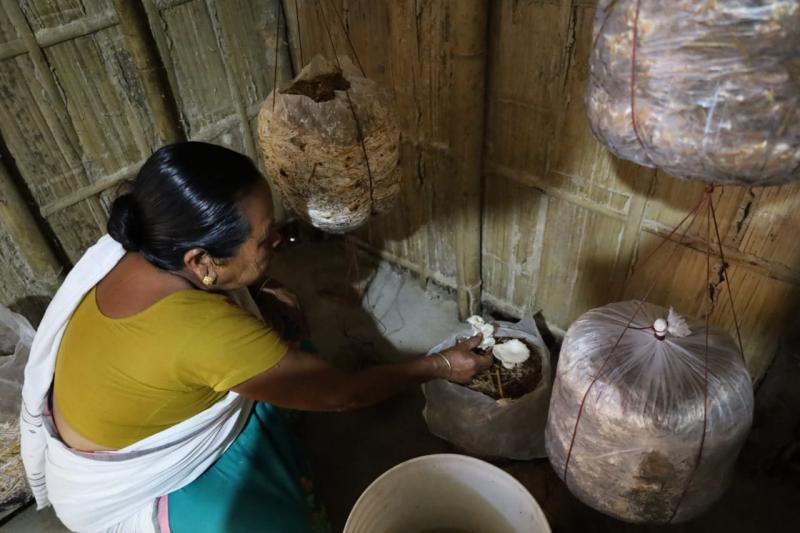
Currently, there are ten mushroom spawn production units in Assam, including five private units. There are about 400 mushroom farmers are in Assam and every year 400 quintal spawns are needed but only 150 quintal is produced in Assam, remaining 250 quintal is procured from outside the state. According to market estimates on an average about 10 tons spawn are procured from outside the state every month from October to March with West Bengal and Himachal Pradesh accounting for the lion’s share to cater to the demand for the entire northeast region.
Apart from different parts of Assam such as Golaghat, Sonitpur, Sivasagar, Goalpara, and Nalbari, Aparna Rabha’s unit supplies mushroom spawns also to Arunachal Pradesh. She plans to supply five to six quintals of spawns to Aruanchal Pradesh this year.
Jiten Gogoi, a mushroom cultivator from Golaghat district purchased 20 kg of spawns from Aparna Rabha’s unit last year and reaped a good harvest. From one kilogram of spawn 10 to 20 kg of mushroom can be harvested. “The demand was huge last year but I could not cater to it. The demand is growing fast with growing popularity of mushroom as food, he adds. Gogoi underwent training on mushroom farming on commercial basis at the North East Institute of Science and Technology, Jorhat.
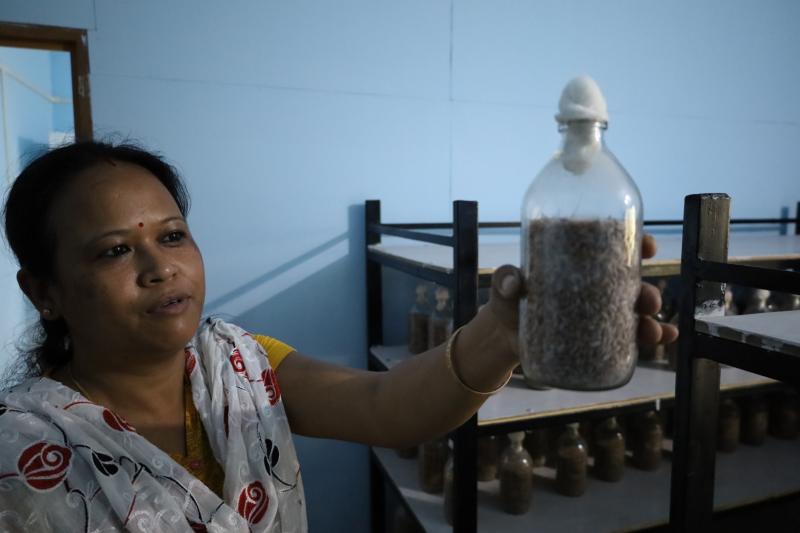
Aparna Rabha explains that all the four mushroom varieties which are commercially important in India- button, oyster, milky and paddy straw mushroom- require different temperature and relative humidity. For winter variety 23 degrees centigrade temperature is required and for summer varieties maximum temperature can be 35 degrees centigrade.
Shahjamal Zakaria, Assistant Director, Agriculture, Assam said the state has huge potential for mushroom cultivation and awareness on it needs to be raised. He points out that China accounts for 47 % of global production while India’s share is only one percent. He attributes to difference in per capita consumption in the two neighbouring countries. Against yearly per capita consumption of 18 kg in China, it is only 700 grams in India.
“The Indian mushroom industry is growing at a growth rate of 8.32% for the last 25 years. The forecasted production for the year 2021 is 2.68 lakh tons with the minimum 2.55 lakh tons and maximum 2.80 lakh tons. The same is calculated for next years till 2030 for which the compounded growth rate is 2.40 percent. The forecasted mushroom production in India is 3.31 lakh tons at the end of next decade”, according to the Annual Report 2022 of ICAR-Directorate of Mushroom Research.